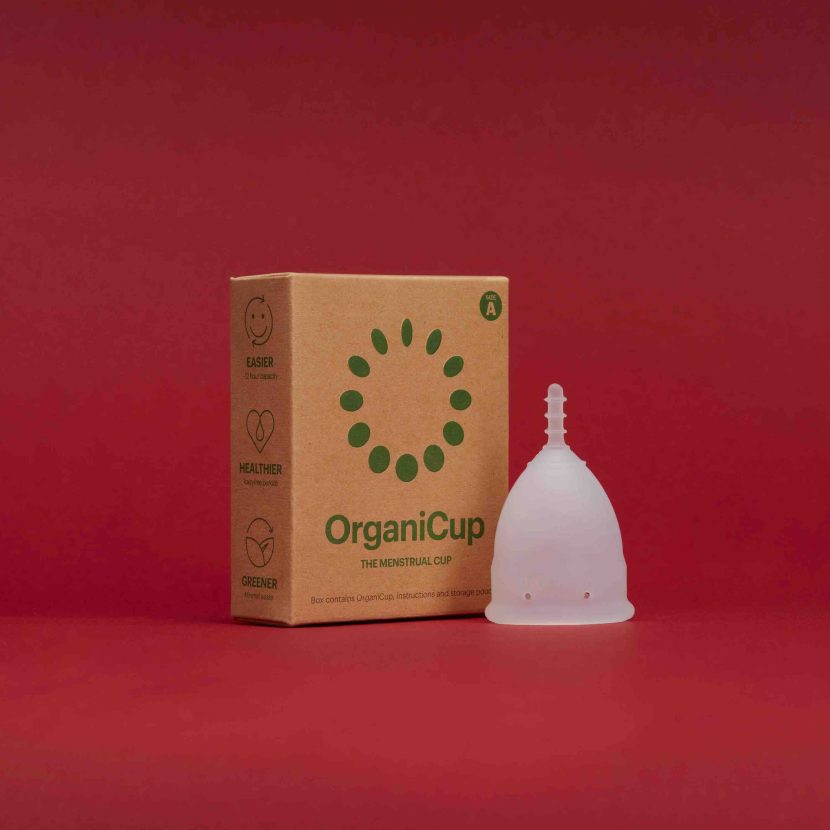Polite notice: You are about to read women only content i.e period talk and women’s sexual health.
11k. That’s how many disposable menstrual products an average women uses in their lifetime. For the UK population, these single use disposable menstrual products such as pads, tampons and their applicators generate about 200k tonnes of waste each year! That’s like filling 8k Olympic sized swimming pools. And most of that is plastic waste. Wow.
I’ve always felt guilty for the period product waste created from the periods I couldn’t avoid having, but thought there was no other alternative. One day I decided to google ‘eco friendly tampons’. A whole list of items were shown to me, and my world opened up. There were tampons made of organic cotton, tampons that were unbleached (who knew tampons were bleached – eww), and reusable period pads, reusable period pants and then suddenly an enigma: a reusable menstrual cup.
When I was younger, menstrual cups were not a thing. Oh boy I wish they were though, as I’m sure many would agree it would have made being a teenager on her period so much more dignified. I would say menstrual cups are the unsung heroes (or more appropriately heroines) of women’s periods.
Menstrual cups are devices that fit where a tampon would and collect your period blood in the clever shaped cup, with the benefit that you only need to empty it every 12 hours, rather than every 4 with a disposable tampon or sooner with a disposable sanitary towel.
Many women find that menstrual cups can be a little tricky for the first few cycles with inserting, but after getting the hang of it say that they would never go back to traditional menstrual products. They can even help to reduce menstrual cramping pain in some women. And when you are wearing one, you can feel like you are not even on your period. You literally only need to think about it when you wake up in the morning and at night. That’s it!
For my first ever cycle I wore sanitary towels, but could not get on with them as they felt bulky in my underwear, as if I was wearing a nappy. This made me feel like a baby wearing a nappy. I only used them for my first cycle and couple of days before I moved onto tampons. I felt very grown up wearing them as no body could tell I was on my period.
Below are some reasons why I did not get on with tampons:
- The cost. Tampons are not free. Either you or your parents pay for them every month. If an average tampon pack of 20 costs £3 (I know different brands cost less/more) for each period, over the year that costs £36 and over a lifetime of periods (say from age 14 to 50) that is £1296 – a lot of money.
- The hassle. They were uncomfortable if I didn’t push it up high enough and I would spend my college lessons feeling unable to concentrate until my next break when I could sort it out.
- The pain. They would hurt when I pulled them out and feel hella strange! I swear they used to make tiny incisions/scrapes as they left my do dar. This was not nice. Especially when I was coming to the end of my period and I would need to pull out a tampon that was dry – it would hurt so bad.
- The risk. I would forget about it and once I left one in for about 2 days because the stringy part had fell off. I only thought to check if there was a tampon still there when I got abdominal pain. It was all manky when I removed it and after researching TSS (Toxic Shock Syndrome), I was really worried about my continual use of tampons (given that I am very forgetful and couldn’t always see the strings of the tampon to remind me that there was one that needed to be taken out).
- The landfill. As someone who tries to do my best to be eco-friendly, every time I needed to use a tampon, my heart sank a little and I felt very guilty (which is sad because women can’t help but bleed). I thought that there must be something else out there that could more sustainably and comfortably deal with the period problem (by the way back then I actually dreaded my periods, just like many teenage girls, they were a nuisance; whereas now I see them as a blessing and something that fascinates me as to the wonders of my reproductive organs that work in sequence without me telling it to).
So it was fair to say that before learning about the miracle of menstrual cups, I, like many women, was not having a very nice time with my periods and I would be filled with so much dread when I saw the first spot of blood in my underwear, thinking ‘here we go AGAIN’! The disposal menstrual products were unpleasant, ineffective, costly and unsustainable.
OrganiCup menstrual cup – honest pros and cons
(+) Friendly, helpful and honest customer service usually gets back to you within 1-3 days via email.
(+) Available in 2 sizes, A and B.
(+/-) Made out of Medical Grade Silicone (LSR, Liquid Silicone Rubber): 1) LSR tooling is expensive and silicone needs to be cured after manufacturing adding extra cost to production. 2) LSR has excellent tear strength (tensile strength. 3) LSR is not recyclable but can be ground down and used to create various high impact sporting surfaces. 4) Menstrual Cups made of silicone have a life of 10 years+ 5) Have low compression strength. This means it can be placed under large amounts of pressure for a long time. It will maintain its shape for the duration of its life. 6) LSR can be heated to high temperatures for sterilisation and can undergo chemical sterilisation. 7) LSR is Odor Free and Hypoallergenic. Has the highest compatibility rating for use inside the human body. Is still the preferred material of choice within the medical industry.
(-) It has a plastic sticker on the side to hold the packaging together (I don’t think this is needed, but I have got this response back from their customer service: ‘Shipments to consumers are individual, however, for business partners we send in bulk.. due to hygienic reasons we have had to use tape to seal the packaging properly. We have found a eco-friendly carton sealing tape that we will be replacing the tape with, but it’s a longer process as it will cover some of the text on our packaging so we have to redesign it, but we are working on it 🙂 In the meantime we are using tape with a plant based glue..’
(-) They are located in Denmark so there is more distance for the products to travel to reach you, and therefore more pollution.
(-) Although pretty at first, the translucent cup becomes stained and becomes an off-clear colour which is not pleasant to look at – good job it will only be you and your ‘do dar’ seeing it.
Conclusion
I love my OrganiCup so much because every time I use it, I feel like I am not really on my period, as I only see red twice a day rather than every time I go to the loo when its the time of the month. I also love that I know every time I use it I am helping the planet be more green. It has a nice non bleached soft bag to store it in discretely, which is nice. I lost my menstrual cup virginity to the OrganiCup so it will always have a special place in my V heart for allowing me to have more eco-friendly, low impact periods. I’d recommend it to any period age woman.
Click here for more information about the OrganiCup.
Peace & Love,
Robyn Elms
Original Publish Date: 23/4/2020




